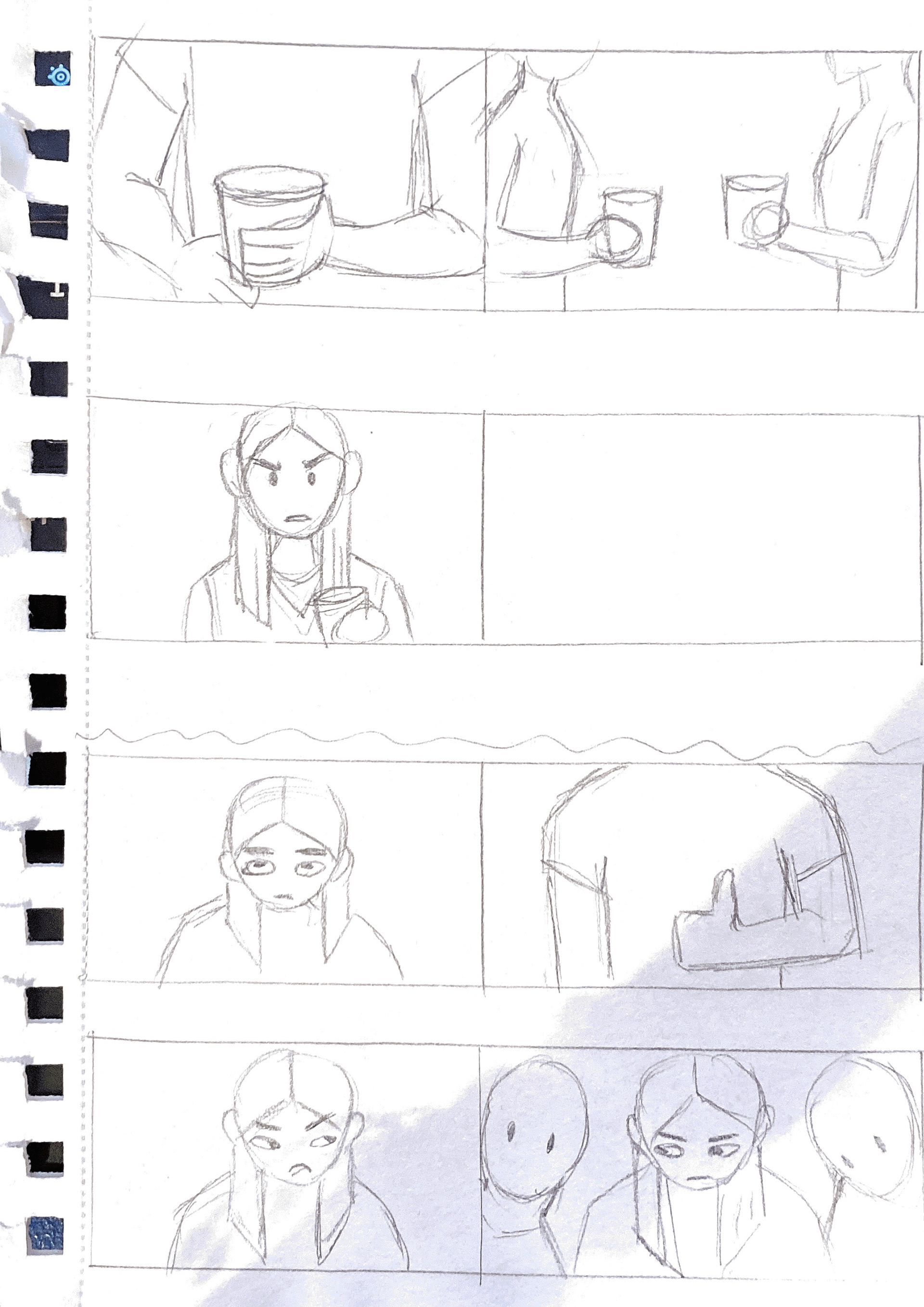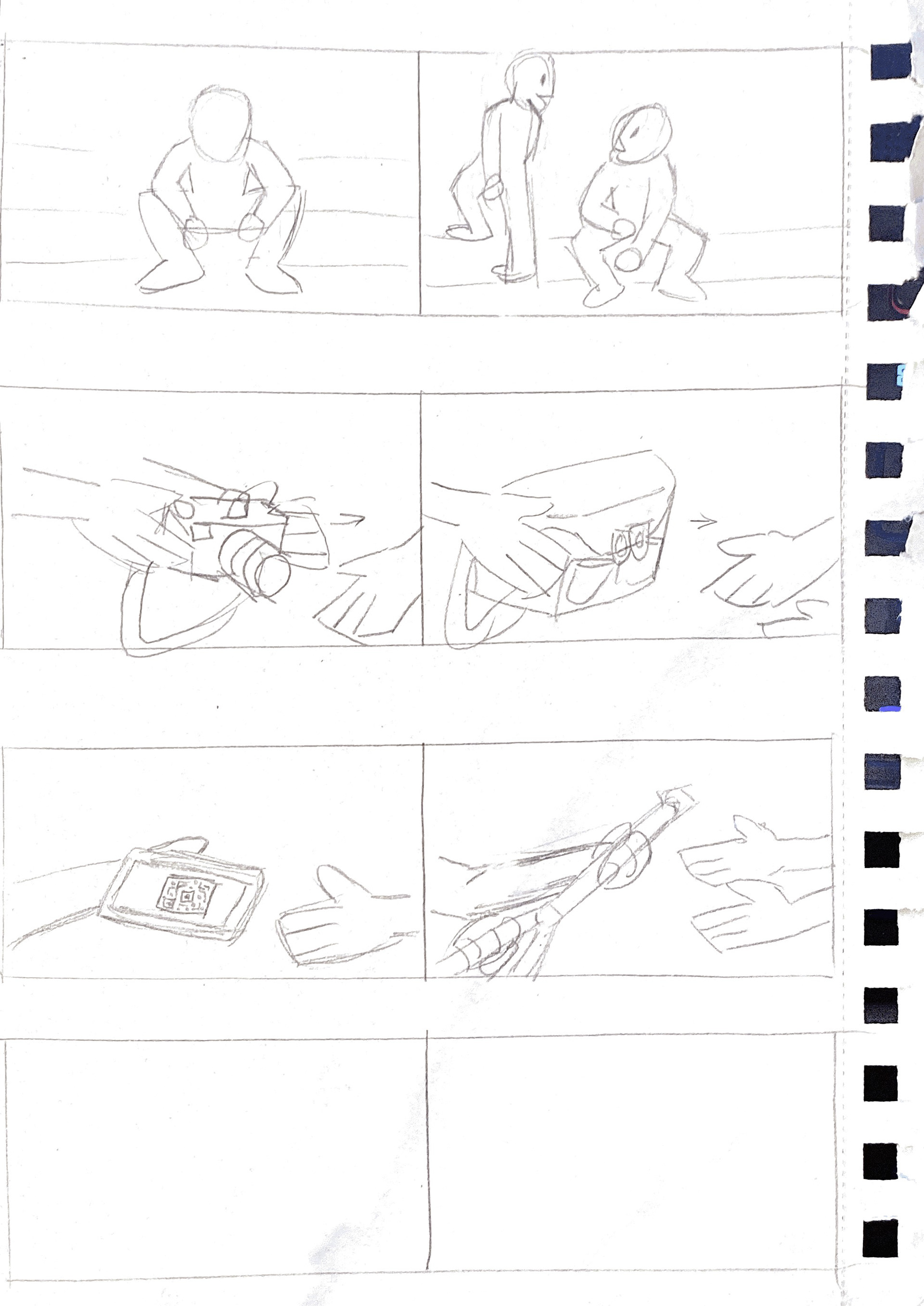Howdy! My name is Grace Alanis, I am graduating senior with a focus in layout. I wanted to further push my layout skills by trying to tell a story through a live-action space rather than a 3D animated space. So for my capstone, I created a live action short film about coming of age in college. Taking inspiration from directors John Hughes and Federico Fellini, the short will be a series of connecting vignettes about pivotal moments I have experienced throughout college.
MOTIVATION / BACK STORY
Focusing on the coming of age subgenre, films that fall under this genre are centered around a protagonist as they transition from childhood to adulthood. Coming of age films often blend drama and comedy, pulling from all aspects of life to tell a true and authentic story. The genre evolved when the concept of a “teenager” was first introduced in the 1950s with the film Rebel Without A Cause. The genre further developed between the 1960s and the 1970s with films such as West Side Story, The Graduate and American Graffiti. However the genre hit its golden era during the 1980s with films like Stand by Me, Dead Poets Society, and The Breakfast Club. This era helped shape the genre to what it is today. This decade was filled with teenage focus films dealing with very serious topics. This helped set this era of films apart and influenced the future of the genre.
During the golden era, John Hughes was a pivotal director. He is best known for his coming of age films and had the greatest influence on the genre. His films are still relevant today because he knew how to balance serious topics with comedic flair and authenticity. Hughes set most of his films where he grew up in Chicago. These settings play a pivotal role in his stories. Each of his films act as love letters to the place he grew up in.
Another director that has been able to capture the essence of growing up is Federico Fellini. Fellini was an Italian filmmaker who is best known for his distinctive style. He is recognized as one of the greatest and most influential filmmakers of all time. He centered his films around flawed characters who struggled to find meaning in their lives and were searching for something beyond themselves. Fellini also used the city he grew up in, Rome, for inspiration. He depicts growing up in Rome through an unfiltered lens. He takes the positive and negative aspects of the city to showcase that he admires all of Rome. To appreciate the city he spent his formative years in, he has learned to love every part that has helped shape the city.
Another director that has been able to capture the essence of growing up is Federico Fellini. Fellini was an Italian filmmaker who is best known for his distinctive style. He is recognized as one of the greatest and most influential filmmakers of all time. He centered his films around flawed characters who struggled to find meaning in their lives and were searching for something beyond themselves. Fellini also used the city he grew up in, Rome, for inspiration. He depicts growing up in Rome through an unfiltered lens. He takes the positive and negative aspects of the city to showcase that he admires all of Rome. To appreciate the city he spent his formative years in, he has learned to love every part that has helped shape the city.
Taking inspiration from John Hughes, I would like to portray the awkward and difficult stage of life, growing up, and portray it sensibility. And similarly to both Hughes and Fellini, I want my short film to act as a love letter to the place where I experienced this stage in life.
References
PROJECT PIPELINE
Pre-Production
Beginning with Pre-Production, I began creating a production timeline and writing out the story script. My original story for the short film was five minutes long but after meeting with my mentor, Sam Woodfin, I decided to scope down my short film to a minimum length of thirty seconds and a maximum length of three minutes. I began rewriting the script with the new scope.
With the updated script, I worked with two friends to help me with storyboards. This process was a small challenge as I had to learn how to communicate my visual ideas verbally so they were able to convey the same visual ideas through the storyboards. After meeting with my mentor and professor, the storyboards went through a few revisions before being finalized.

Storyboard Pass 1

Storyboard Pass 2

Storyboard Pass 3

Storyboard Pass 4

Storyboard Pass 5
Final Storyboards
Once the script and storyboards were finalized, I updated the production timeline and created a filming schedule. The film schedule laid out each shot with its time and location it would be filmed. As well as, the actors and equipment needed for each shot. Linked with each shot were the storyboards and its corresponding script.
Film Schedule
Production Timeline
During the early stages of Pre-Production, it was recommended that I work with Luma AI and Mocopi for PreViz. However, after running into several technical issues, I decided it was best to focus more on the traditional ways of filmmaking.
Luma AI Test Footage
Production
Entering the Production stage, I began filming test shots to figure out blocking. I mainly filmed around campus but realizing I was not getting the aesthetic setting I wanted, I spent the following week scouting different locations. Finding locations I found suitable for my story, I continued with filming at these different locations. After weekly meetings with my mentors, Woodfin and Evan Dickinson, I was given feedback on layout, framing, editing, and story motivation. Based on the feedback given, I would reshoot the scenes. Each scene took about three different reshoots.

Shot 1 Reshooting Progress

Shot 4 Reshooting Progress

Shot 6 Reshooting Progess

Shot 7 Reshooting Progress

Shot 9 Reshooting Progress
One of the difficulties I faced during Production was filming tracking shots. While most of the shots were static focusing on the main character’s shoes, some shots required the camera to follow the main character’s movement. In order for me to achieve these shots I placed my camera on my skateboard and had one of my friends assist me with tracking the actor as they walked. The tracking shots that were taken outside posed some difficulty as the footage would come out unstable due to an unsmooth ground. These shots took several reshoots as I tried different ways to smooth out the movement. I tried rolling the skateboard over paper and a yoga mat to help reduce the bumpiness of the ground. I also tried filming at different locations to try different surfacing. The third and final location proved to be the best for filming the opening and ending of the short film. The footage still has some shakiness to it, it came out the most stable compared to the previous recordings.
Shot 1 - Tracking Progress
Shot 10 Tracking Progress
Post-Production
After I had a majority of the shots reshot and finalized, I began with the Post-Production stage. As Production was wrapping up it began overlapping with Post-Production. I organized and assembled cuts to create a rough cut of the final short film. Based on the rough cut, I got feedback from my mentors based on editing, sound editing, and color grading. Each week I made edit changes and updated the final cut. As I worked on the final cut, I was also able to create a thirty second trailer to submit to VIZ-A-GOGO which is an end of the year art showcase. I ended up with three different versions of the final cut before finalizing a fourth version that I was satisfied with. The final cut ended up being three minutes in length.
Work space in After Effects
FINAL VISUAL RESULTS
Trailer submitted for VIZ-A-GOGO
Final Short Film
CONCLUSION
I was able to reach my goal in creating a live action short film. I was able to reach my stretch goal of creating a trailer. I was able to keep my short film under five minutes. I understand now to take into consideration filming reshoots earlier when planning a production calendar and film schedule. While I was able to capture shots I am satisfied with for this class, there are some shots I would like to revisit to further polish up the scenes. I have learned to edit as I go rather than waiting till I have what I consider to be the final shots. Towards the end, editing became a bit overwhelming as the feedback received began piling up. Overall, I am satisfied with my final results and look forward to learning more about live action filmmaking.